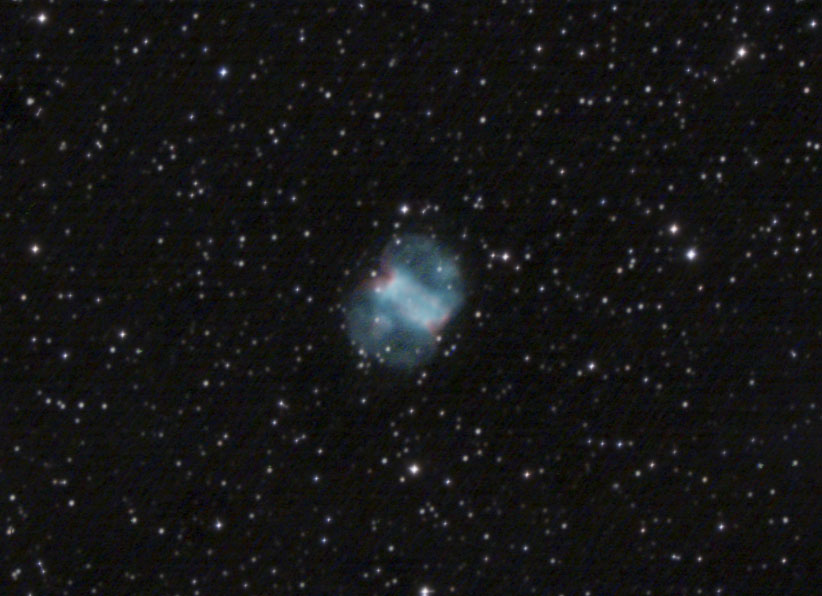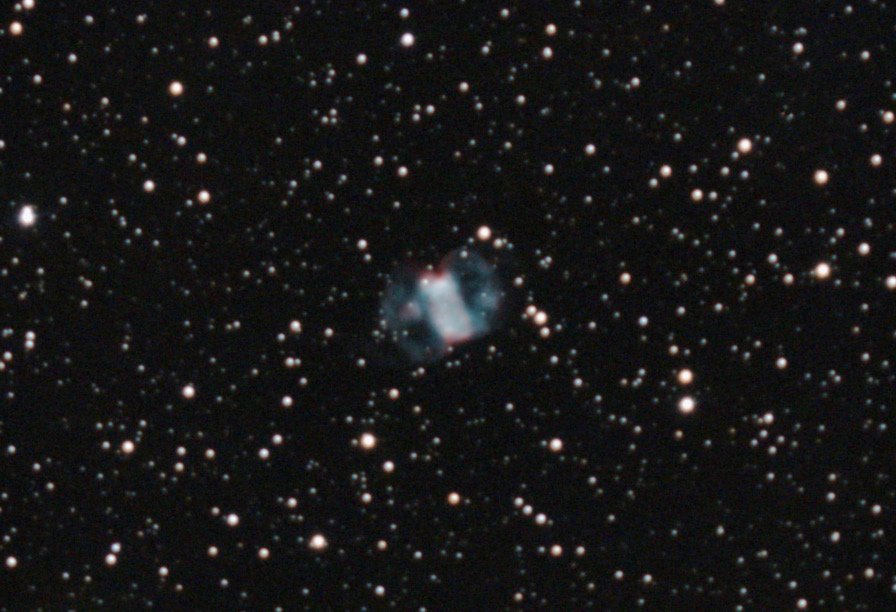
M76 Little Dumbbell Nebula aka. Barbell, Cork Nebula (NGC 650)
Magnitude: 10.1
Distance: Aprox: 2,500 light-years
Constellation: Perseus
Radius: .617 light years
The nebula’s size and faintness makes it one of the most difficult Messier objects to observe. Messier 76 lies in the eastern part of Perseus constellation, next to the border with Andromeda. It is quite easy to find because it is located just south of Cassiopeia‘s W asterism and about a degree north-northwest of the magnitude 4.0 star Alseiph, Phi Persei. The nebula is in the same region of the sky as the Andromeda Galaxy (M31). The best time of year to observe the Little Dumbbell Nebula is during the months of October, November and December. It is a challenging object for southern observers because it never climbs high above the northern horizon when seen from locations south of the equator.
The Little Dumbbell Nebula was formed when a Sun-like star ran out of fuel in a late stage of its life and then expelled its outer layers. The expelled material was then heated by the radiation of the stellar remnant, producing the glowing clouds that we see as the nebula. The clouds will disperse over the next several thousand years and the central white dwarf will eventually cool and fade away.
Messier 76 is classified as a bipolar planetary nebula (BPNe). The central star, HD 10346, has a visual magnitude of 15.9 and a temperature of about 60,000 K. In fact, M76 is known to have two stars, not one, at the centre. The nebula itself has a surface temperature of about 88,400 K and is moving toward us at 19.1 km/s. Its clouds are expanding at a rate of 42 km/s. The bright portion of the Little Dumbbell Nebula is about 65 arc seconds in diameter and it is surrounded by a halo about 290 arc seconds in diameter.
The Little Dumbbell Nebula was discovered by the French astronomer Pierre Méchain on September 5, 1780. Méchain reported the discovery to his friend and colleague Charles Messier, who subsequently included the nebula in his catalogue of deep sky objects on October 21.
Taken 9/25/19 in Kenton, Oklahoma by Russell Kille on a Celestron C14 Edge HD SCT at f/7.7 and ZWO ASI294MC Pro camera.

